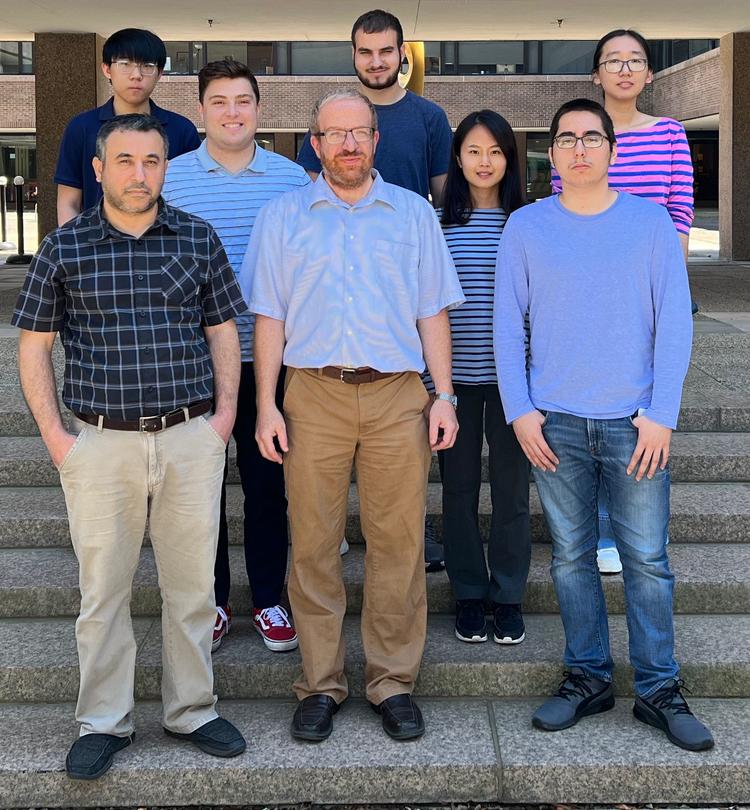Overview
Our group uses precision atomic physics measurement techniques to study fundamental forces of Nature and to develop new quantum sensors for practical applications. Most of our projects require building a unique setup and provide many opportunities for hands-on learning of precision experimental techniques. We spend a lot of time understanding all sources of noise, from technical to quantum, in order to realize the highest possible sensitivity in our experiments.
Current experimental projects include atomic magnetometers, nuclear spin co-magnetometers, Rydberg microwave detectors and portable magnetic field sensors. In addition to several practical applications, we use these quantum sensors to search for violation of Lorentz invariance, new spin-dependent forces and coherent dark matter candidates as described in more detail below.
Current research projects
Atomic magnetometers
Our group has been developing several types of atomic magnetometers using laser-pumped alkali-metal atoms. Such atoms (K, Rb, or Cs) can be contained in a small glass cell that is simply heated to achieve high atom density. We developed spin-exchange relaxation free (SERF) and radio-frequency (RF) atomic magnetometers that are being used for detection of weak signals of practical significance, such as magnetic signals from the heart and the brain. Our goal is to achieve the highest possible magnetic field sensitivity, often setting world records for sensitivity in a given sensor volume. Our current focus is on the development of vector magnetic field sensors that can simultaneously detect the three vector field components with quantum-limited sensitivity.
Nuclear spin co-magnetometers
Another long-standing focus of our group is the development of co-magnetometers that use two different spin species to measure magnetic field in the same volume. The goal of these sensors is to search for new physics that couples to spins while excluding the effects of ordinary magnetic fields. With such sensors we set the best limits of violation of local Lorentz invariance, long-range spin-dependent forces and possible axion-like dark matter. In general, most new physics effects that couple to particle spin can be searched for using co-magnetometers. In the past we focused on alkali-metal nuclear-spin co-magnetometers that can achieve the highest energy resolution. Our recent focus is on the development of noble gas co-magnetometers containing two noble gas species with nuclear spins (for example He-3 and Xe-129 or Ne-21). Such systems have particularly long spin coherence times and strong signals, so can eventually achieve even higher energy resolution. Spin co-magnetometers also can be used as inertial rotation sensors with competitive sensitivity, so they have a practical application as well.
Rydberg atom microwave detectors
Our recent new project is the development of detectors for microwave signals in the GHz range using alkali-metal atoms excited to Rydberg states. Such atoms can still be contained in a glass cell at room temperature, making it a very practical sensor. Estimates of sensitivity indicate that Rydberg atom detectors can exceed the sensitivity of room temperature microwave antennas. We are making progress toward realizing such a quantum-limited antenna. We use multi-pass optical cells that allow one to control the optical path length separately for the two laser beams participating in the interrogation of Rydberg atoms.
Portable operation of atomic sensors
Another direction of our research is in the development of portable magnetic field sensors. Here we collaborate closely with a small company Twinleaf started by former group members. We investigate fundamental limitations of portable self-contained magnetic field sensors and help develop their applications, for example in measurements of magnetoencephalography (MEG) signals generated by electrical currents in the human brain. Such signals are a billion times smaller than Earth's magnetic field and could only be studied for many years using liquid-helium cooled SQUID magnetometers inside heavily shielded rooms. We have previously demonstrated detection of MEG signals using SERF atomic magnetometers inside a magnetic shield, but now we can detect such signals with a portable system without a magnetic shield by making use of the high dynamic range of our recent scalar atomic magnetometers.
Group Members
| Name | Role | |
|---|---|---|
| Nezih Dural | Optical Engineer | [email protected] |
| Jingyao Wang | Graduate student | [email protected] |
| Joe Wiedemann | Graduate student | [email protected] |
| Jake Shin | Undergraduate student | [email protected] |
Recent members
| Wonjee Lee | Graduate student | [email protected] |
| Daniel Grass | Post-bacc student | |
| Bryan Oller | Undergraduate student | [email protected] |
Group photo summer 2022

